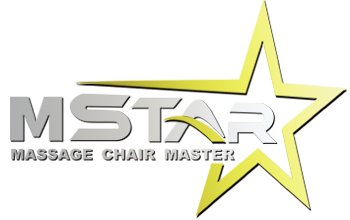Views: 2 Author: Site Editor Publish Time: 2025-08-27 Origin: Site
A massage chair isn't just a “luxury item”—it’s a versatile tool that adapts to your daily rhythm, solving pain points in work, exercise, family life, and even post-travel recovery. The key to unlocking its full potential? Matching its functions to your specific scenario. Below’s a tailored guide to using massage chairs in 5 common life scenes, so you can get targeted relaxation every time.
1. Office Break: Relieve “Desk Strain” in 15 Minutes
For 9-to-5 workers glued to chairs, neck stiffness, shoulder tightness, and lower back soreness are daily struggles. A massage chair during short breaks can reverse “desk strain”—but timing and function selection matter.
Best time to use: 10:00 AM (after 2 hours of work) or 3:00 PM (when energy dips). Avoid using it right after lunch (it may affect digestion).
Function settings:
Focus on the neck and shoulder area: Choose “kneading + rolling” modes (most chairs label this “office mode” or “upper body focus”). Adjust the intensity to medium—too strong may cause muscle soreness.
Add lumbar heat: Turn on the waist (heat) function to relax tight lower back muscles (ideal for those who hunch over keyboards).
Keep it short: 10–15 minutes is enough. Longer sessions may make you drowsy, affecting afternoon work.
Pro tip: If your chair has a “zero-gravity” mode, use it briefly (5 minutes) to reduce spinal pressure—perfect for days with back pain.
2. Post-Workout Recovery: Speed Up Muscle Repair
Athletes, gym-goers, or even those who do 30-minute home workouts need more than stretching to soothe sore muscles. A massage chair can boost blood flow to tired tissues, reducing lactic acid buildup and soreness.
Best time to use: 30 minutes after your workout (when your heart rate returns to normal). Avoid immediate use—your body needs time to cool down first.
Function settings:
Target large muscle groups: For leg day (squats, lunges), use “compression + tapping” modes on the thighs and calves (many chairs have a “sports recovery” preset). For upper body workouts (push-ups, weightlifting), switch to “shiatsu + rolling” for the back and arms.
Skip intense kneading: After strength training, muscles are micro-teared—gentle compression (like a “squeeze”) is better than deep kneading, which could irritate them.
Add foot massage: Don’t forget your feet! Standing workouts (running, HIIT) strain foot muscles—use the chair’s foot roller function to ease tension.
Pro tip: Pair the massage with a cold drink (to replenish electrolytes) for faster recovery.

3. Family Night: One Chair for All Ages
Massage chairs are a “family-friendly” investment—kids, parents, and grandparents can all benefit, but adjustments are needed for different age groups.
For kids (8–12 years old):
Use light intensity only: Kids’ muscles are still developing—choose “gentle rolling” for the back (5–8 minutes max). Avoid heat functions (their skin is sensitive).
Best for: After a long day at school or sports practice (e.g., dance, soccer) to relax tight shoulders from backpacks.
For parents (35–55 years old):
Mix functions: Try “combination mode” (kneading + tapping + compression) for full-body relaxation. Focus on the waist and hips (common pain points from household chores or commuting).
Timing: 20 minutes after dinner (helps with digestion while reducing stress).
For grandparents (60+ years old):
Prioritize gentle, slow modes: Use “slow rolling” or “airbag compression” (avoids deep tissue pressure). Enable heat on the back and legs (improves circulation for those with joint stiffness).
Avoid zero-gravity if they have dizziness: Stick to a slight recline instead.
Pro tip: Set a “family massage schedule” (e.g., 7:00 PM for kids, 7:30 PM for parents) to make it a fun daily ritual.

4. Post-Travel Recovery: Beat Jet Lag and Stiffness
Long flights, car rides, or train trips leave your body “compressed”—tight necks from sleeping upright, swollen legs from sitting still, and overall fatigue. A massage chair can be your “first stop” home to reset.
Best time to use: 1 hour after arriving home (after showering and changing into comfortable clothes).
Function settings:
For jet lag (long flights): Use “full-body gentle mode” (15–20 minutes) with heat on the back and feet. The warmth helps regulate your body clock, while light massage eases fatigue.
For swollen legs (car/train rides): Elevate your legs (use the chair’s leg rest) and turn on “calf compression” (start with low intensity, gradually increase). This reduces fluid buildup in the legs.
For neck stiffness (sleeping on planes): Choose “neck focus” mode with slow kneading—avoid fast tapping, which may worsen soreness.
Pro tip: Drink a cup of warm herbal tea (like chamomile) during the massage to enhance relaxation and fight jet lag.

5. Before Bed: Improve Sleep Quality
If you struggle with insomnia or “racing thoughts” at night, a massage chair can replace screen time as a calming pre-sleep routine—helping you fall asleep faster and sleep deeper.
Best time to use: 30–60 minutes before bed (avoids stimulating your body too close to sleep).
Function settings:
Slow, gentle modes only: Opt for “slow rolling” or “airbag compression” (no intense tapping or deep kneading). The goal is to relax, not energize.
Maximize heat: Turn on heat for the back, waist, and feet—warmth lowers your body temperature over time, signaling to your brain that it’s time to sleep.
Keep the room dark: Dim the lights or use a nightlight while using the chair—bright light disrupts melatonin production.
Pro tip: Pair the massage with soft music or a guided meditation (many smart chairs have Bluetooth speakers) for a “sleep-friendly” combo.

Final Tip: Listen to Your Body
No matter the scenario, always adjust the massage chair to your comfort level. If you feel pain (not “good soreness”), stop immediately—over-massaging can strain muscles. For people with chronic conditions (e.g., herniated discs, high blood pressure), consult a doctor before using specific modes (like deep kneading or zero-gravity).
A massage chair works best when it fits your life—not the other way around. By matching its functions to your daily scenes, you’ll turn it from a “nice-to-have” into a “can’t-live-without” tool for comfort and health.
content is empty!
